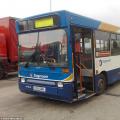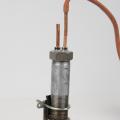In modern society, everyone is constantly in a hurry somewhere, and drivers are no exception, striving to get to their destination faster, overtaking other cars. Overtaking on the road usually does not raise questions, as most people understand that they should be guided by signs and road markings when performing a maneuver. But what if the driver needs to overtake someone at an intersection? Crossing roads is generally recognized as a dangerous zone; unfortunately, accidents occur within its borders every day. Therefore, it is important for motorists to know in which cases overtaking at an intersection is possible, and in which - the rules road traffic forbid it.
Can you overtake at an intersection?
This issue of concern to drivers is considered in Section 11 of the SDA. You can overtake at intersections, but not at all. According to the rules, it is legal only on unregulated intersections, and the driver who wants to overtake must move along the main road. First, let's explain the basic concepts. An intersection is where roads cross. He can be different types - cruciform, T-shaped, with a dividing strip, with a circular motion. Also, intersections are divided into regulated and unregulated.
Overtaking is called the advance of one or more cars, for the implementation of which you need to drive into the oncoming lane. It is assumed that then (after the completion of the maneuver) the overtaking driver will return to his lane. Changes in traffic rules regarding overtaking took place at the end of 2010, but still not all motorists have remembered their essence. Previously it was believed that overtaking meant any departure from the lane occupied by the car. This is not the case now. For the maneuver you are performing to be considered overtaking, it must meet the following criteria:
- When overtaking another vehicle, the driver is always ahead of it. But not every lead can be called overtaking.
- The main condition for overtaking is to enter the lane intended for oncoming traffic.
- To complete overtaking, the motorist must return to the lane he previously occupied.
Important: if you decide to overtake a passing car, then look around and find out if the oncoming lane is free, which you will have to drive into when maneuvering.
You should also pay attention to one point - overtaking is not allowed along the entire length of multi-lane roads. For example, if the road has four lanes (two in the opposite direction and two in the opposite direction), then you have the right to legally carry out not overtaking, but advancing at the intersection and outside it. How? Change from the right lane to the left and get ahead of the passing vehicles without going into the oncoming lane.
At which intersections is overtaking allowed?
Due to the fact that intersections are traditionally a place that accumulates road traffic accidents, there is only one way to legally overtake at an intersection - if the driver is driving on the main road. Below we will discuss how to perform such a maneuver.
Overtaking at an intersection on a main road
All unregulated intersections are divided into equal and unequal. The intersection of roads will be unequal if a special sign “Main road” is installed, the secondary road is usually characterized by a sign “Give way”. Traffic regulations allow overtaking at an intersection on a main road.
Important: immediately before the intersection, the often dashed line turns into a solid one. Remember that you cannot run into prohibitive markings, this may result in a fine or deprivation driving license... When overtaking, make sure it starts and ends before a solid appears.
Consider Figure 1. A driver wants to overtake a truck. Will he violate traffic rules? No, the maneuver will be absolutely legal, since vehicles are moving along the main road, which can be seen from the established sign. Opposite Lane free, there is no continuous line markings, the turn signal is on, therefore, you can overtake.

True, there is one controversial nuance - sometimes motorists forget to turn on the direction indicators. It seems such a small thing, but often it leads to sad consequences in the form of an accident. It is easy to imagine that the driver of a car that you overtake at an intersection might decide to turn left without being informed about it by turning on the turn signal. Then there is a great chance of a collision at the moment when you will overtake in the oncoming lane, and another car will turn. There are other situations - the turn signal is still on, but this does not stop the one who wants to overtake. The fault for such accidents is often recognized as mutual, since one car owner may not inform about his intention to turn, and the other may interfere and not make sure that the maneuver is safe when overtaking. Of course, each case has its own subtleties, but it is better not to deal with them. Therefore, you should be extremely careful and cautious if there is a need to overtake at an intersection.
Many drivers are interested in why the shape of a sign indicating a priority road is fundamentally different from all other signs - round, square, triangular. "Main road" - a white rhombus with a yellow rhombus inscribed in it. What is the reason for this difference? This sign is one of the most important for motorists, as it allows them to understand whether overtaking is possible at an intersection or not, whether they have priority. And in inclement weather road signs often they are covered with snow so much that it becomes unclear what is depicted on them. Remember - the sign informing about the main road can be identified by its non-standard shape.
Overtaking at an intersection on a minor road
If you are approaching an unequal intersection on a secondary road, you will see a Yield sign (Figure 2). In this case, a red car has no right to overtake a brown one, since this is not allowed by traffic rules. Why? In such a situation, you need to give way to all vehicles: the oncoming lane and those moving to the right and left. It is logical that overtaking becomes a completely inappropriate maneuver.

Overtaking at an equivalent intersection
What if the intersection is unregulated but there are no signs pointing to the main or secondary road? Know that there is an intersection of equivalent roads in front of you. It is also forbidden to overtake on it; such an intersection assumes that the driver will miss the obstacle on the right. But when overtaking, it will simply be invisible, so the maneuver cannot be performed. Refer to Figure 3.
If a burgundy car tries to overtake a gray one at an equivalent intersection, it will not see another car inexorably approaching it from the left, which has priority on traffic rules.

Is overtaking allowed at controlled intersections?
Regulated intersections are equipped with traffic lights or have a traffic controller. Some drivers feel like a green traffic light is the same as a main road. But no. And the traffic rules categorically prohibit overtaking at regulated intersections. In fact, the ban is logical, because the traffic light at the intersection of roads does not appear just like that, but because of the intensity of traffic, it is designed to delimit the flows of cars, simplify the life of both drivers and pedestrians, therefore, in such a difficult place, overtaking, which are maneuvers of increased dangers will be superfluous.
Figure 4 shows an adjustable intersection with a traffic light, the green light is on, but it is still forbidden to overtake a gray car, since due to the intensity of traffic, most often there will simply not be a moment when the oncoming lane is free. But in any case, the traffic rules prohibit such a maneuver.
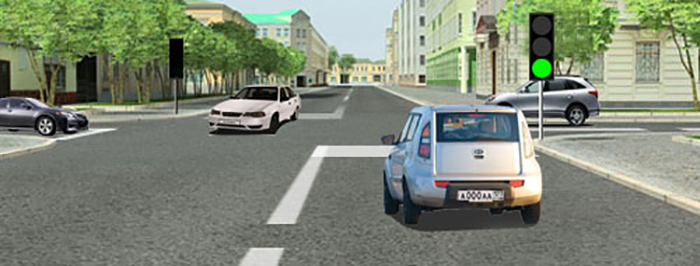
Punishment for overtaking at an intersection
Overtaking in the wrong place often can lead to an accident, therefore irresponsible drivers are punished severely. In part 4 of article 12.15 of the Administrative Code, it is determined that entering the oncoming lane in traffic violation will lead to punishment in the form of a fine of 5,000 rubles or the confiscation of a driver's license for a period of four months to six months. The decision on the measure of responsibility of the motorist is made in court. As a rule, you have to part with the rights, a monetary penalty is applied when the violation was recorded by a camera.
Important: lose driving license it is possible if you are caught by traffic police officers while overtaking. Video recording without the participation of human faces only threatens with a fine.
Sometimes people cannot wean themselves from bad habits and break the rules over and over again. Then the punishment will be tougher. In case of repeated overtaking, documented by a traffic police officer, the offender will not sit behind the wheel soon - the license will be taken away for one year.
Save the article in 2 clicks:
Thus, overtaking at an intersection is possible if you are driving on the main road. In other cases, it is prohibited to overtake passing vehicles. The punishment for such an action will be deprivation of rights or a fine of 5,000 rubles. Remember that overtaking is always dangerous, and intersections are already a zone of risk concentration, so it is better not to rush and follow the traffic rules.
Often, an attempt to overtake at an intersection ends in a head-on collision with very serious consequences. After all, the cumulative speed at the moment of impact is rarely below 100 kilometers per hour, and braking occurs almost instantly, which generates inertia of enormous force. In this article, we will tell you in what conditions overtaking is allowed at intersections, when it is prohibited, and what sanctions are provided for incorrect overtaking at an intersection.
Overtaking or getting ahead
To figure out in what cases it is permissible to overtake at an intersection, and when it is forbidden, it is necessary to figure out how overtaking is different from advancing? Until 2010, overtaking was considered any advance of a neighboring car associated with leaving its lane; after 2010, the interpretation of overtaking has changed, now it is considered an advance associated with leaving the oncoming lane. Therefore, any advance that is not associated with driving into the oncoming lane is not considered overtaking, which means that it is not prohibited at any intersection, provided that the sequence of passage is observed. Therefore, the term "overtaking at an intersection" includes only situations when you, in order to bypass or get ahead of a neighboring car, go into oncoming traffic.
When overtaking is prohibited at regulated and non-regulated intersections
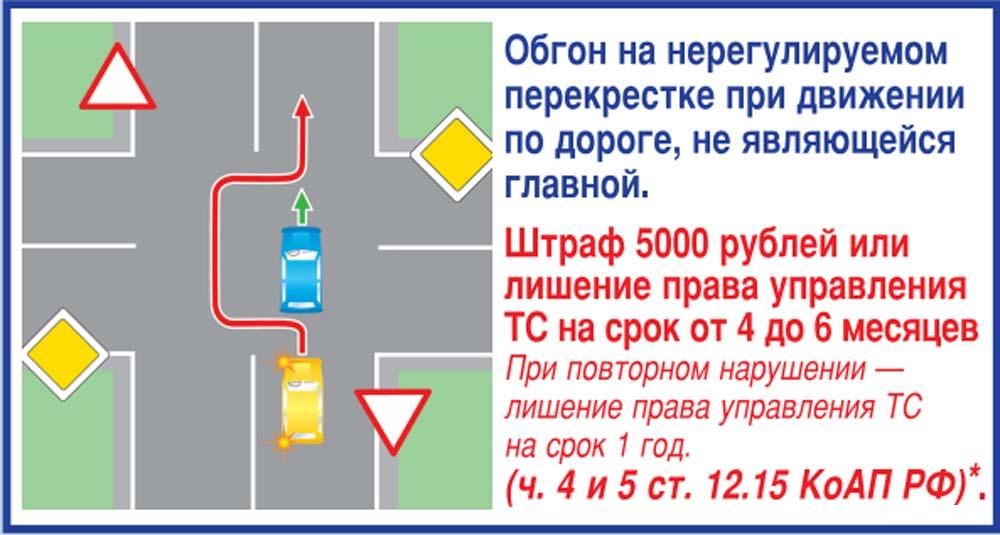
Chapter 11 of the traffic rules describes the various situations in which overtaking is prohibited. For example, if the car in front of you or behind you has already gone to overtake, or the attempt to overtake will pose a threat to other road users. These rules are fully applicable to intersections, but the restrictions do not end there. In paragraph 4 of Article 11 it is written that overtaking is prohibited at regulated intersections or when leaving a secondary road at an unregulated intersection... This means that the illuminated green traffic light allows you to drive in your own lane or change lanes in the same direction of traffic, but prohibits leaving the oncoming lane. You can get ahead of cars in other lanes, but without going into the oncoming lane, which, according to traffic rules, is overtaking. You can overtake at an unregulated intersection (where there is no traffic light or regulator), if you leave the main road and no one is driving in the opposite lane towards you, but if you enter from a secondary road, then overtaking is prohibited in any case.
Crossroads overtaking and common sense
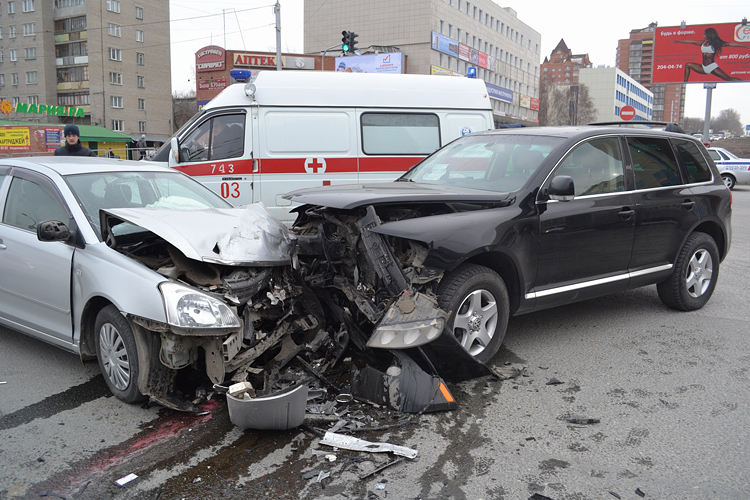
The statistics of the traffic police and the Ministry of Emergency Situations clearly states that the accident rate at intersections is much higher than on flat sections of roads. Indeed, at intersections, cars change direction and speed, and drivers often break the rules by not turning on the direction indicators, which is why other drivers do not receive warnings about a future maneuver. Often, inexperienced or inadequate drivers at intersections make sharp maneuvers without any warning for various reasons - either they forgot to turn on time, or the car in front of them performed a dangerous maneuver. This dramatically increases the danger of overtaking, so even in cases where the rules of the road allow you to overtake at intersections, think about whether you need it? You will gain a few seconds and meters, but you risk getting into an accident, especially if there is heavy traffic at the intersection.
What is the penalty for overtaking at an intersection
Overtaking at an intersection, committed contrary to the rules of the road, is perceived by traffic police officers not as overtaking with errors, but as driving into the oncoming lane at the intersection, which leads to a fine of 5 thousand rubles or deprivation of rights. And this applies only to those situations in which you do not create emergency on the road. The Ministry of Internal Affairs, the traffic police and the government of the Russian Federation are aimed at combating dangerous driving, but so far there are no penalties for it, which does not prevent traffic police officers from adding fines for violating other articles to the fine for driving into the oncoming lane. For example, you may be ascribed to not keeping distance and lateral spacing. (fine 1500 rubles), violation of the sequence of passage, because formally you prevented the driver of the oncoming lane from going first ( fine 500 rubles) or other articles.
Any city dweller knows what an intersection is - it is a place where roads intersect at the same level. According to statistics, the intersection is also the most emergency place, most accidents occur here due to the fact that drivers have poorly mastered the rules of their passage, especially unregulated ones. No wonder, after all, at the exams in the traffic police, so many tickets are devoted precisely to the sequence of passage of road intersections.
There are two main types of intersections:
- adjustable;
- unregulated.
However, in reality, there are a huge variety of types: T-shaped, X-shaped, Y-shaped. In addition, they can be simple (a simple intersection of two roads) and complex (multilateral, squares, ring roads, junctions). The rules for driving through intersections are described in chapter 13 of the Rules of the Road.
It should be noted that the accident rate at intersections increases significantly if drivers decide to overtake. As you know, overtaking is an exit to the oncoming one, but at the intersection there are no delimitations into lanes and markings are not applied here, that is, the division into lanes is purely conditional here, except perhaps for roundabouts. What, then, are the rules for overtaking at an intersection?
Is it possible to overtake at an intersection
To deal with this issue, you need to open chapter 11 of the traffic rules and find paragraph 11.4. It states clearly about the intersections:
- it is prohibited to overtake passing vehicles at regulated crossings;
- as well as on unregulated, when driving on a secondary road.
Accordingly, overtaking at an intersection is possible only in the following cases:
- there is no traffic light or traffic controller;
- you are driving on the main road.
Let us remind you that in traffic rules it is necessary to distinguish two concepts: overtaking - with the departure to the "oncoming", advancing - overtaking within its own. In addition, one should not forget that in cities there are usually in front of intersections, and according to the updated paragraph 11.4 of the traffic rules in such places, regardless of whether there are pedestrians on the roadway or not.
Traffic accident at an intersection
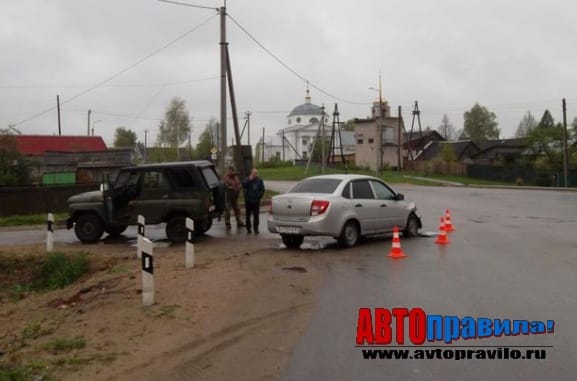
A very common situation in which accidents occur - one car goes to an unregulated intersection of unequal roads to overtake, and the driver of the overtaken vehicle is about to turn left. The accident occurs in most cases outside the city if there are signs "crossing with a secondary road" - 2.3.1 or signs 2.3.3, 2.3.5, 2.3.7 - "adjacent to a secondary road on the left".
The perpetrators are determined on the spot depending on the circumstances, for example, the one who was going to turn, did not turn on the direction indicators in time. And the one who was going to overtake could not physically see that after a few meters the marking from intermittent becomes solid. Moreover, on high speed he might not have noticed the sign 2.3.1.
Thus, overtaking at an intersection is highly discouraged, even if, according to the rules, you have the right to do so.
If you are turning at an intersection from the main road to a secondary road, then you need to pay attention to the following factors:
- if there are vehicles approaching from the right;
- whether there are vehicles moving in the adjacent lane in the opposite direction;
- not being overtaken is a very important rule outside the city.
It is also necessary to promptly signal to other road users about the intention to turn left at the intersection. Well, those who are going to overtake must adhere to the rules specified in chapter 11 of the traffic rules - "Overtaking, oncoming traffic".
Penalties in this case will be:
- or according to the Code of Administrative Offenses 12.14 Part 1 - did not turn on the turn signal - a warning or a fine of 500 rubles;
- either according to the Administrative Code 12.15 h. 4-5 - 5 thousand or deprivation of VU - driving into the oncoming lane in violation of traffic rules.
Based on all this, it is not recommended to overtake at intersections.
Overtaking at an intersection
I dare to assume that many do not know if it is possible to overtake at the intersection! This applies not only to novice drivers who recently got behind the wheel. Even some "professionals" sometimes show ignorance in this matter. Did you learn the rules of the road well? Can you explain when you can overtake at an intersection and when not?
In fact, driving through intersections is a serious thing. Here you need to be well versed and know all the subtleties. In no case should you fly over with the thought: "maybe it will carry you!" Those who thought so have long left the ranks of respectable and long-lived drivers. But you and I are much smarter and we want to live happily ever after, and in retirement we are going to move to Cyprus!
By the way, if you have a green traffic light or you are passing an intersection on a main road, the risk of getting into an accident still remains, despite your advantage in traffic. In any situation, you must look around! It is your responsibility to make sure that the drivers around you understand that you have an advantage and are willing to give you the way. Well, if "something" with glass eyes and an empty head flies at you, then believe me, no matter what traffic signal you have, be kind, save your life by letting "this" go on a long journey. By the way, always look in the eyes, they can tell you a lot, but about this some other time.
So, for a start it would be nice to understand what kind of intersections there are. This has already been written in the article Rules for driving through intersections without violating traffic rules. We are interested: Adjustable intersection (if a traffic light is installed or a traffic controller is present), Unregulated - unequal intersection, unregulated - equivalent crossroads. I will not focus on these concepts, but if these are some "terrible" words for you, then go back and read! In fact, everything is as simple as a clear day, well, of course, provided that someone explains it to you. So that's it. Let's start with controlled intersections.
OVERTAKING FORBIDDEN
I think you have already guessed that overtaking is prohibited at a regulated intersection. I want to draw your attention to the very concept - "Overtaking"... I hope you remember that overtaking is always associated with going into the oncoming lane. In the picture, the driver of the red car is going to leave his lane and go into the oncoming lane in order to overtake! Very gross violation of traffic rules!
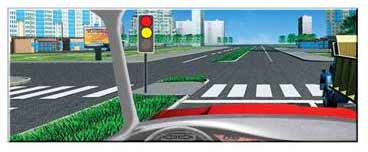
In the next picture we see also a regulated intersection. But unlike the first picture, there are two stripes in each direction! Red car driver is going outstrip freight car... I draw your attention to the concept "advance"! In a specific situation, this means going faster in the left lane than the truck in the right lane. That is, the driver of the red car does not overtake, but advances. By the way, on this road we see a dividing strip (green lawn in the middle of the carriageway), so even if the driver is red passenger car would want to overtake in the oncoming lane, as in the previous version, he hardly managed to move over such an obstacle. Well, if there was no dividing strip, then he still cannot overtake, because as we have already understood, overtaking at a regulated intersection is prohibited! But you can get ahead, but only if there are two or more bands in passing direction... And one more digression, pay attention to the traffic light, we just got a yellow signal. So if you find yourself in such a situation, be careful - a pedestrian may jump out from behind the truck, finishing the crossing of the carriageway, he will need to be passed!

Now consider a situation where you can overtake at an intersection. If you are driving on a main road through an unregulated intersection, you can overtake. Everything is extremely simple! Make sure that you are really on the main and boldly overtake. But this is relevant if the road is two-lane, as in the picture. If there are two or more lanes in the same direction, then you can only advance. If there are several oncoming lanes, then naturally it is prohibited to drive into the oncoming lane.
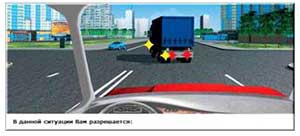
And finally, a few words about overtaking on the right... As such, this concept, one might say, ceased to exist after the latest changes in traffic rules. On the right, we can only go around other vehicles. And then, if the width of the roadway is enough for us to perform the maneuver. In this figure, the driver of a car can wait until the truck turns left, or can go around it on the right lane if it is not busy.
![]()
But it is forbidden to go around on the right side of the road!
04 December 2014, 20:17, question No. 641822 Kovalev Yuri, Novoaleksandrovsk
Clarification of the client
Clarification of the client
Strange, one point of the rules contradicts another. Indeed, at any intersection, the markings from discontinuous to solid and vice versa. And you can't cross a solid one. With this, the rules allow overtaking at an unregulated intersection when driving on a main road. I'm confused.
Collapse
Lawyers Answers (7)
- 10.0 rating
- expert
- 10.0 rating
- expert
- at regulated intersections, as well as at unregulated intersections when driving on a road that is not the main one;
Lawyer, Moscow
No, overtaking is not prohibited, but you have violated a continuous line, 1.1, therefore, it is possible to apply part 4 of Art. 12.15 Administrative Code of the Russian Federation
Was the lawyer's answer helpful? + 0 - 0
Collapse
Lawyer, Izhevsk
Good afternoon, dear reader.
This article will focus on Accident when overtaking at an intersection, which, as practice shows, is quite common.
An important
a feature of this type of accident is the fact that the traffic police are not
have a clear position on which driver to choose
the culprit of the situation. Therefore, in practice, in the event of a collision
cars at the intersection during overtaking, the culprit is
one or the other driver. Several such accidents have recently been considered
in the traffic accidents section of the pddclub.ru forum.
This article will look at several options for an accident when overtaking at an intersection. In each of the situations, points of the rules will be given,
violated by each of the drivers, and will also be considered
additional fines that will be imposed on each of the drivers.
Accident at an intersection where overtaking is allowed (overtaking at an unregulated intersection when driving on a main road)
To begin with, let's remember in what cases it is allowed to overtake at an intersection. Clause 11.4 of the SDA will help us with this:
11.4. Overtaking prohibited:
at regulated intersections, as well as at unregulated intersections when driving on a road that is not the main one;
on pedestrian crossings if there are pedestrians on them;
on level crossings and closer than 100 meters in front of them;
on bridges, overpasses, overpasses and under them, as well as in tunnels;
at the end of an uphill, on dangerous bends and in other areas with limited visibility.
So consider overtaking at an unregulated intersection when driving on a main road:
IN
In this case, the blue car is making a left turn and the black
the car is overtaking the blue at the intersection. Who is
is to blame for the described situation?
The following points of traffic rules apply to this situation:
8.1.
Before starting a movement, changing lanes, turning (turning) and
when stopping, the driver must give signals with light indicators
turning the corresponding direction, and if they are absent or
faulty - by hand. When performing the maneuver, there must be no danger to traffic, as well as interference with other road users.
11.2. The driver is prohibited from overtaking in the following cases:
the vehicle in front overtakes or avoids an obstacle;
a vehicle driving ahead in the same lane gave a left turn signal;
the vehicle following it has started overtaking;
by
he will not be able to complete overtaking without endangering traffic and
interference with the overtaken vehicle, return to the previously occupied
strip.
Clause 8.1 applies to the driver of a blue car, and clause 11.2 to the driver of a black one.
So
now, if during overtaking an unregulated intersection when driving on
an accident will occur on the main road, theoretically there may be
both drivers are to blame, because blue interfered with another participant
movement (paragraph 8.1), and the black one was overtaking the car that submitted
left turn signal (paragraph 11.2).
However, in the described situation, one of the drivers is usually assigned guilty, and for the following reasons:
1.
The driver of the blue car does not give a turn signal at all or
turns it on only after black has already started overtaking. In that
case only blue is to blame.
2. Blue car driver
turns on the left turn signal in advance, but despite this
black car driver starts overtaking. In this case, the culprit may
assign only black.
As you can see, it basically all depends on
blue car driver action. So remember that when turning
to the left, firstly, you should turn on the turn signal in advance, and
secondly, just before the maneuver, look in the left mirror
rear view.
I also want to draw your attention to the fact that these measures
precautions must be taken at any left turn, regardless of
whether you are driving on a main road or a secondary one, on a regulated
an intersection or unregulated, turn at an intersection or
outside of it. And after considering the following situations, you will understand why.
I will cite additional punishments that will be imposed on car drivers in the above situation:
1. The driver of a blue car will get off with a warning or a fine in the amount of 500 rubles (Article 12.14 point 11).
2. As for the driver of a black car, for violation of paragraph 11.2 Traffic rules punishment not currently provided.
3.
Speaking about paying for the repair of cars that have been involved in an accident, it should be noted that
that both drivers will pay for it. Specific proportions will be determined
judge.
Was the lawyer's answer helpful? + 0 - 1
Collapse
Lawyer, Izhevsk
4.
Leaving in violation of the Traffic Regulations on the lane intended
for oncoming traffic, or on tram tracks in the opposite direction,
with the exception of the cases provided for by part 3 of this article -
(as amended by Federal Law of 23.07.2010 N 175-FZ)
(see text in previous edition)
entails overlapping
administrative fine in the amount of five thousand rubles or deprivation of the right
driving vehicles for a period of four to six months.
Was the lawyer's answer helpful? + 0 - 0
Collapse
Lawyer, Moscow
But I didn’t cross a solid one. And the rules do not prohibit overtaking at an unregulated intersection when driving on the main road. There were no prohibitive signs.
Kovalev Yuri
The prohibition is formulated by markup 1.1
Was the lawyer's answer helpful? + 0 - 0
Collapse
Lawyer, Izhevsk
Overtaking at an intersection is regulated by just one short paragraph of paragraph 11.4 of the Rules:
11.4. Overtaking prohibited:
Now you need to remember that intersections are regulated and
unregulated, on unregulated roads may be the main and
secondary. The main road can change direction in this case.
It is important to remember that priority signs are not valid at regulated intersections.
So overtake at the crossroads prohibited when driving on a secondary road:
This situation may arise during peak hours, when
a two-way road, almost all transport moves in one
direction and movement goes in two rows and at the same time the simple
rule.
Overtaking is prohibited when driving through an intersection of equivalent roads:
It is not uncommon for small towns to lack priority signs on the roads,
despite the fact that this is a violation of the requirements of GOST, and when driving along
on some main city road there are many
first glance of minor roads. However, this is not so, everyone is like
intersections are equivalent and overtaking on them is prohibited.
It is also forbidden to overtake at any regulated intersections:
This rule just needs to be remembered, since a green traffic light
many associate with driving on a main road. This is not true. On
there is no regulated intersection of the main and secondary roads
And the situation when overtaking at an intersection is allowed is when driving on the main road:
This rule applies mainly on roads outside settlements,
however, be careful, not infrequently before the intersections of nansesen
solid marking 1.1. It is forbidden to cross it.
Controversial situations
It would seem that what can be argued about in the eight words of the Rules? Let's consider three situations.
Driving through a regulated intersection in three lanes:
In heavy traffic, it happens that the width of the road is sufficient for
movement in 3 rows or the markings on a three-lane road have simply been erased. IN
In this case, movement along the logical middle row is carried out with
driving into the oncoming lane (for more details, see the article "Oncoming lane. When possible, when not") and when ahead, overtaking is carried out at a regulated intersection.
The main road changes direction to the right:
It seems that the movement is carried out along the main road and at the intersection
the vehicle will also be on the main road, why
cannot overtake in this case?
Traffic rules determine the actions of the driver if the direction of the main road changes:
13.10. In the event that the main road at an intersection changes
direction, drivers driving on the main road must
follow the rules of crossing intersections
equivalent roads. The same rules should be followed
drivers driving on secondary roads.
Based on this paragraph of the Rules, when changing the direction of the main
roads to the right, guided by the rules of the intersection
on equivalent roads the vehicle has priority,
an approaching road from the right and relative to this vehicle
is not the main one and overtaking at such an intersection is prohibited.
The main road changes direction to the left:
The opposite situation, the main road changes direction to the left and in this
In any case, the movement remains priority. However, like
in the previous case, drivers driving on the main road
are guided by the rules of travel at the intersection of equivalent roads, and on
overtaking at crossroads of equivalent roads is prohibited. Moreover, such a maneuver
is unsafe.
In conclusion, a very simple conclusion can be drawn: Overtaking on
an intersection is only allowed when driving on a main road that is not
changes direction and in the absence of other prohibitions.
Was the lawyer's answer helpful? + 0 - 0
Collapse
Has committed a violation of clause 1.3 of the SDA, while driving a car, he began to overtake a car moving in front of him in the same direction at the markings 1.6. I continued to move in the oncoming lane, while the 1.1 solid marking line was to the right of the car (1.1 marking line separates traffic flows opposite directions) after completing the overtaking maneuver at the intersection. Responsibility for which is provided for in part 4 of article 12.15
I was embarrassed, after that, that the inspector did not mention a word about the intersection of unequal roads, it was also overlooked that I was moving along MAIN ROAD unregulated intersection.


